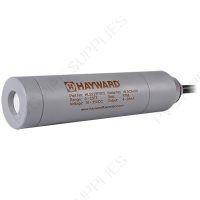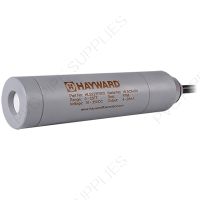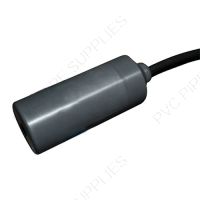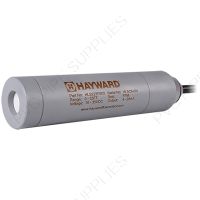Hayward Sensors
Bidding a job & need contractor pricing?
We've got you covered!

 Hayward sensors are liquid level sensors used to continuously measure and report the amount of media within a container or other storage space. Part of Hayward's line of “plug and play” Instrumentation Products and Solutions, the HLS Series and TLU Series sensors are engineered for use in systems and work applications that require high end monitoring, precision and reliable control. These Hayward® sensors are used in and ideal for scenarios where knowing the immediate status of an ingredient, process fluid or product material is vital to work flow, overall safety, quality control and final result. These sensors can serve an integral role in smooth, repeatable, high quality operations and outcomes. They are designed for complete submersion in the application fluid and can be positioned at full bottom or suspended at any level within the media. Note, they are not designed to measure liquid beneath the level of the sensor, only the liquid above the sensor position. Hayward sensors are often used in batch productions, chemical metering, purification and product manufacturing. Common applications for the Hayward sensor include aquatics and animal life support, chemical processing and handling, cooling towers, food and beverage scenarios, irrigation, marine and maritime, mining operations, plating and surfacing, storage tanks, dosing tanks and waste water treatment.
Hayward sensors are liquid level sensors used to continuously measure and report the amount of media within a container or other storage space. Part of Hayward's line of “plug and play” Instrumentation Products and Solutions, the HLS Series and TLU Series sensors are engineered for use in systems and work applications that require high end monitoring, precision and reliable control. These Hayward® sensors are used in and ideal for scenarios where knowing the immediate status of an ingredient, process fluid or product material is vital to work flow, overall safety, quality control and final result. These sensors can serve an integral role in smooth, repeatable, high quality operations and outcomes. They are designed for complete submersion in the application fluid and can be positioned at full bottom or suspended at any level within the media. Note, they are not designed to measure liquid beneath the level of the sensor, only the liquid above the sensor position. Hayward sensors are often used in batch productions, chemical metering, purification and product manufacturing. Common applications for the Hayward sensor include aquatics and animal life support, chemical processing and handling, cooling towers, food and beverage scenarios, irrigation, marine and maritime, mining operations, plating and surfacing, storage tanks, dosing tanks and waste water treatment.
- Hayward® HLS Series Advanced Submersible Pressure Level Sensor – Engineered with advanced sensor technology designed to provide precise, high accuracy, repeatable measurements for an extensive list of liquid materials, chemicals and work environments. Key features of the HLS Hayward® sensor include: (1) Accuracy and function unaffected by waves, foaming or headspace vapors; (2) An all thermoplastic housing made of professional grade CPVC for reliable, lasting corrosion resistance; (3) High sensitivity ceramic Al2O3 diaphragm, and; (4) PTFE coated, triple sealed cable to ensure fluid does not enter the cable or sensor body. For the HLS Series model, we offer 0 - 15 feet / water (6.5 PSI) level range sensors with 30 foot cable lengths and 0 - 33 feet / water (14.3 PSI) level range sensors with 50 foot length cables. HLS Series Hayward® sensors are high precision instruments rated to an accuracy +/- 0.25% of full scale. They are available with either EPDM or FPM seals.
- Hayward® TLU Series Level Sensor – Engineered as a solution for more difficult level monitoring applications where ultrasonic type sensors will not work. The TLU Series is an industrial level pressure sensor with a heavy duty design ideal for continuous level measurement of aggressive liquids, foaming or condensate type media. For the TLU Series model, we offer sensors with either polypropylene or PVDF housing. They are rated at 0 - 34 feet / water (14.73 PSI) level with a 49 foot cable. The Hayward® TLU Series level sensor features a PTFE (Teflon™) coated cable and ceramic Al2O3 diaphragm for measurement reading. The TLU Series is rated to an accuracy +/- 0.50% of full scale. They come with FKM seals.
Maximum working temperatures for Hayward® sensors vary by housing material. Sensors made from CPVC are rated for temperatures up to 140°F and not beneath 30°F. Sensors made from PP are rated up to 170°F, and sensors made from PVDF are rated up to 195°F.
Sensors are intended for use in liquid media applications only. They should not be used for air or gas type services. Use of this product in air or gas service may cause damage or harm to product, property or person. When installing Hayward sensors and to ensure proper use, avoid placing sensors along bottom surfaces where sediment, sludge or other undissolved materials may accumulate and affect the sensor's ability to provide accurate readings.




